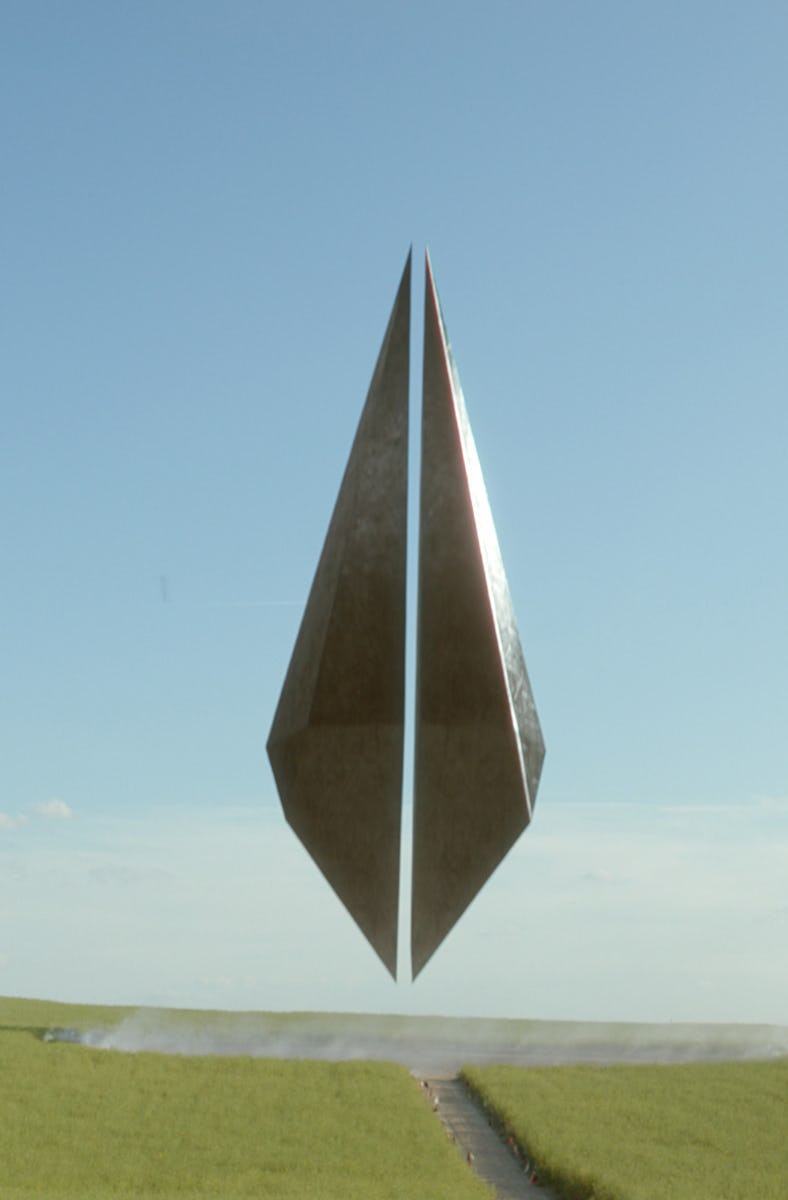Foundation Just Honored A Classic Sci-Fi Twist
A moment to make Asimov fans proud.

Adaptations of older science fiction novels are hard. It’s been over seven decades since Isaac Asimov published his second Foundation novel — Foundation & Empire — in 1952, and the origins of those ideas date back to short stories as old as 1945. The fact that the Apple TV+ series Foundation manages to take these characters and themes and make it all relevant in 2025 is a shocking feat, worthy of the predictive powers of Hari Seldon (Jared Harris) himself. And, although Foundation has taken massive liberties relative to the books’ source material, Episode 6 of Season 3, “The Shape of Time,” delivers one of the most important twists from the second novel, and does so almost 100 percent faithfully.
Here’s why the latest Foundation twist is so pivotal and why it’s also straight from the mind of Isaac Asimov.
Spoilers ahead for Foundation Season 3’s “The Shape of Time.”
Written by Eric Carrasco and Foundation showrunner David S. Goyer, “The Shape of Time,” as usual, features several overlapping plot developments at once. Much of the episode is about the sharing of information: Gaal (Lou Llobell) and Demerzel (Laura Birn) forge an uneasy truce to try and see into the future, while Brother Day (Lee Pace) attempts to give memories back to Song (Yootha Wong-Loi-Sing). But the biggest pivot in this episode comes at the end, when the long-awaited hologram/AI version of Dr. Seldon appears and attempts to soothe his followers' fears about the “Third Crisis,” which backfires in a way that is straight from the second novel.
This version of Hari Seldon has no clue what anyone is talking about.
Since the start of Season 3, the show has been careful to distinguish the threat of the Mule (Pilou Asbæk) with the actual “Third Crisis.” The latter is something that Seldon and the psychohistory plan predicted, while the former is a total wild card, an outlier that exists well beyond Seldon’s prescient math. At the end of the episode, two cranky factions of the Foundation, the regular version, and the Traders Alliance meet at the vault, and Seldon congratulates them on avoiding an outright civil conflict. This idea is straight from the book, as is what comes next: It becomes readily apparent that the AI version of Seldon has no idea about the Mule, and thus, the reason for the Traders and the Foundation coming together isn’t part of the Seldon Plan at all.
In the new TV version, this question is posed by Toran Mallow (Cody Fern) when he says, “But what about the Mule?” But, just as in the novel, Seldon is baffled. What happens next is very faithful to the book. Although we’re on New Terminus in the TV show, rather than good old “original” Terminus in the book, the result is the same. The Mule attacks, and Seldon’s transmission ends.
In the short term, this represents a great cliffhanger for the series. We’re a little over halfway through Season 3, and the Mule is moving swiftly to take over planet after planet. But, more broadly, in terms of the themes of Asimov’s Foundation novels, this twist represents the moment where the opposing ideas collide. As science fiction critic James Gunn (not that James Gunn) pointed out in his 1982 book on Asimov, The Foundations of Science Fiction, he claims that the Foundation stories deal with the notion of determinism, but also, paradoxically, are anti-deterministic.
“Asimov has the best of determinism and free will,” Gunn argues, pointing out that while many of the stories in Foundation might feel like twisty stories about unavoidable fates, combined with sci-fi equations, the tension between those two extremes is what makes the concept of Foundation so enduring. “If determinism alone were Asimov’s subject, the Trilogy [of Foundation novels] would reveal characters continually defeated in their attempts to change events...”
A younger Asimov contemplates the future.
And yet, in order for the basic notion of the show (or books) to seem cool, psychohistory has to work at least part of the time. This is why the ending of “The Shape of Time” is so classic and so smart. The ancient predictive power of Seldon is proven correct; the Traders and the Foundation have been engaged in a long-standing struggle, just as he foresaw. But the reason for their coming together is way outside of Seldon’s calculations, because nobody could have anticipated the specific powers of the Mule.
In this twist, Foundation, just like the books, gets to have its cake and eat it too: The science fiction premise of psychohistory is still in play, but that doesn’t mean everything that comes next has been predicted.